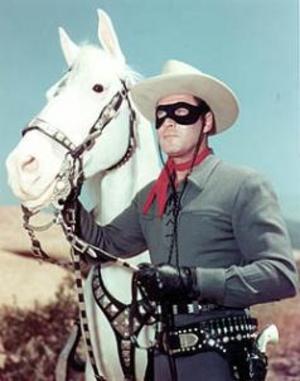In 1998 the release of Smoke Signals represented a very small step for filmmakers but was a large step in the promotion of American Indians in film. Sherman Alexie wrote the screenplay and he based the screenplay off of stories from his book The Lone Ranger and Tonto Fistfight in Heaven. As with any film there are several aspects of the storyline, filming, and overall representation that can be considered when evaluating and reviewing any film. When looking into the film Smoke Signals, some of the considerable criteria includes the similarities and differences between The Lone Ranger and Tonto Fistfight in Heaven and Smoke Signals, the political climate surrounding the film and how American Indians are represented in the film.
There are many differences as well as numerous similarities between Smoke Signals and The Lone Ranger and Tonto Fistfight in Heaven. First, since The Lone Ranger and Tonto Fistfight in Heaven is a collection of short stories, Smoke Signals storyline is less similar to that of the book then many other novels and their corresponding film.
The main storyline of the film comes from the story, “This is What it Means to Say Phoenix, Arizona”. Some of the differences between this story and the film include, that in the short story they travel to Arizona by airplane while in the film they travel by taking a bus. Additionally, some other major changes are added most likely to increase the length of the story so that it was better suited to be produced in the medium of film, such as that Thomas and Victor walk to Victor’s Father’s home from the bus stop and in the book they take a taxi, they also added all of the dialogue and actions associated with fry bread that is not talked about in the book, additionally Suzy Song is exclusive to the movie and is not discussed in any of the stories in the book.
A lot of the dialogue, witty phrases and one liners, characters and places that are in the movie but not in “This is What it Means to Say Phoenix Arizona”, are drawn from other stories in the book, including “Because my Father Always Said He was the Only Indian who saw Jimi Hendrix Play “The Star-Spangled Banner” at Woodstock” and “The Only Traffic Signal on the Reservation Doesn’t Flash Red Anymore”, as well as others. From these other stories parts of the film such as the ideas of characters driving backward, quitting drinking but then being a chronic Diet Pepsi drinker, the importance of basketball to American Indians and the story of Thomas’ father being an anti-Vietnam War protestor are all drawn from a short stories contained in The Lone Ranger and Tonto Fistfight in Heaven.
A specific difference is that in the book the Spokane is the featured tribe and the story takes place on the Spokane Reservation in Washington where as in the film the movie is centered on the Coeur d’Alene tribe and Coeur d’Alene Reservation in Idaho. All in all, most of the differences between the book and novel seem to be minimal because most of the concepts, one-liners, and storyline of the film are drawn from the book or seem to be inspired by parts of the book.
The political and cultural climate surrounding this film seems to be focused on issues directly related to American Indians and life on a reservation. These issues include the effects of poverty, the inability to improve one’s economic status, addiction, racism and domestic violence. Smoke Signals highlights each of these issues in a variety of ways from showing scenes of domestic violence, public drunkenness, acts of racism directed toward the characters and lack of financial independence.
These scenes specifically include when Victor’s father lights Thomas’ parents home on fire as he is intoxicated, another scene in which the characters are obviously inebriated is when Victor when asked who his favorite Indian is he replies, “nobody.” Domestic violence is highlighted by Victor’s father’s abuse to his mother and their obvious financial insecurities are shown with Victor is unable that makes his trip to Phoenix, without financial assistance. Therefore, the social, cultural, political and personal issues faced by American Indians and especially those living on the reservation are clearly expressed in this film.
Smoke Signals was the first major production that had a large amount of influence in its production completed by American Indians. Yet, this film seems to reinforce many stereotypes about American Indians by sharing few specific characteristics about the Coeur d’Alene tribe, including specifics about their traditions, beliefs, subsistence strategies, or history.
The only thing that is specifically said about the tribe is that they are a fishing tribe. Other than that the film only focuses on generic Indian culture such as the emphasis on fry bread, basketball, style of dress, importance of hair, Thomas’ character as a storyteller and the manner in which Thomas and Victor sing on the bus are all examples of generic American Indian behavior and beliefs that are used to describe a specific tribe, but are used without the support or other effort to describe the actual characteristics of the Coeur d’Alene tribe.
In this way, this film help perpetuate the myths and stereotypes about American Indians and in no way allow or persuades the uneducated viewer to look at American Indians in a different light, because it emphasizes that all tribes are all the same, rather than promoting the fact that each tribe has and had its own distinct belief system, traditions and way of life and continue to be unique from other tribes.



